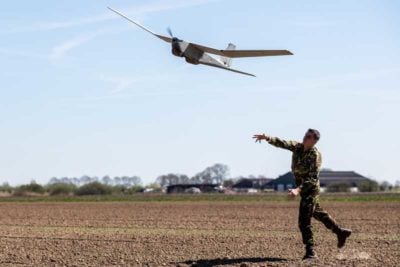
What do you look like to the enemy?
Shoot, Move, Communicate
For years, this maxim has formed the basis of western military infantry doctrine. To successfully engage, a target a soldier needs to be able to shoot accurately and place fire where it is needed. To get into an effective fire position, they will need to be skilled in moving. And to move as a group, communication is essential. While advances in technology have made it easier to do all three, it is communication that presents the biggest challenge in near peer warfare.
Voice and data communication on the battlefield make extensive use of the electromagnetic spectrum. And while effective communication can provide a tactical advantage, the electromagnetic emissions from the same communications can provide the enemy with essential information. Every time a device transmits there is a risk that the transmissions could be detected and located by the enemy; compromising the safety and security of the troops on the ground.
For the past 20 years this hasn’t been an issue in the West, as US and coalition forces have been mainly involved in counter insurgency operations. As the focus moves back to near peer operations, adversaries will be better equipped and will have the knowledge to be able to exploit any spectrum emission. Knowing what you look like to the enemy has never been more important.
Compromised by Communications
 In 2020 the US Army conducted an exercise where a troop of highly experienced soldiers were sent on a simulated reconnaissance mission. Despite moving in cover and remaining camouflaged, the troop’s communications were quickly picked up by the by the simulated enemy. The enemy were then able to geolocate the troop and call in a simulated airstrike. This resulted in a predicted 75% casualty rate.
In 2020 the US Army conducted an exercise where a troop of highly experienced soldiers were sent on a simulated reconnaissance mission. Despite moving in cover and remaining camouflaged, the troop’s communications were quickly picked up by the by the simulated enemy. The enemy were then able to geolocate the troop and call in a simulated airstrike. This resulted in a predicted 75% casualty rate.
These highly skilled soldiers had no idea that they were being monitored. They didn’t know what their RF signature looked like, and the mission was compromised because of it.
EMCON is for Drone Operators Too
 The current conflict in Ukraine has highlighted the effectiveness of drones from an ISR and direct-action perspective. But as drones emit RF signals, they too can be tracked and geolocated. There have been several incidences of drone operators in Ukraine being targeted by Russian artillery after their drone signals have been geolocated. “Drone was landing and in the next 30 seconds, a shell came in, really close, like 30 meters.” -Volodymyr Demchenko to CNN.
The current conflict in Ukraine has highlighted the effectiveness of drones from an ISR and direct-action perspective. But as drones emit RF signals, they too can be tracked and geolocated. There have been several incidences of drone operators in Ukraine being targeted by Russian artillery after their drone signals have been geolocated. “Drone was landing and in the next 30 seconds, a shell came in, really close, like 30 meters.” -Volodymyr Demchenko to CNN.
Why Off Might Not Mean Off
The obvious thing to do if it is suspected that communications frequencies are being monitored, is to stay silent. But it is not just voice radios that create emissions. There are a number of data communication links that can be receiving and transmitting without any input from the operator. MANET radios operating as part of a network can also have the same issue. And if they are transmitting, they can be detected.
Verifying Emissions
The answer to remaining hidden, is to verify the unit’s emissions. In a training scenario this can be done with a network of RFeye Receivers covering the training area. The exercise can be carried out, communications and/or drone emission monitored, and the results fed back to the troops on the ground. Once they are aware of what is being transmitted and on what frequencies, steps can be taken to change procedures and minimize transmissions. In a real deployment, equipment such as an RFeye Stormcase or SenS Portable could be used to check emissions before the Line of Departure.
If you would like your unit to remain undetected, speak to us today and we can help you to monitor emissions and get a true picture of what the enemy can see.

White paper
Hertz & Minds: Electronic Warfare & the tactical land battle in Ukraine
Dr Withington’s in-depth analysis highlights essential lessons from the conflict for future warfare.
